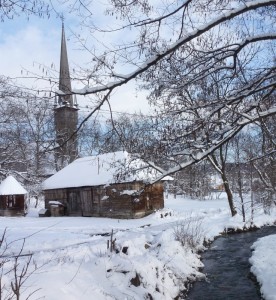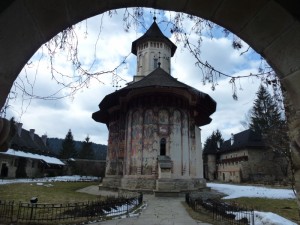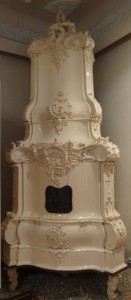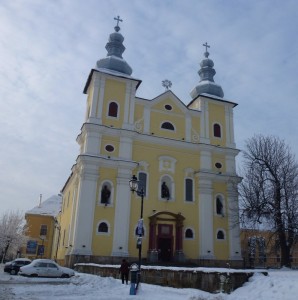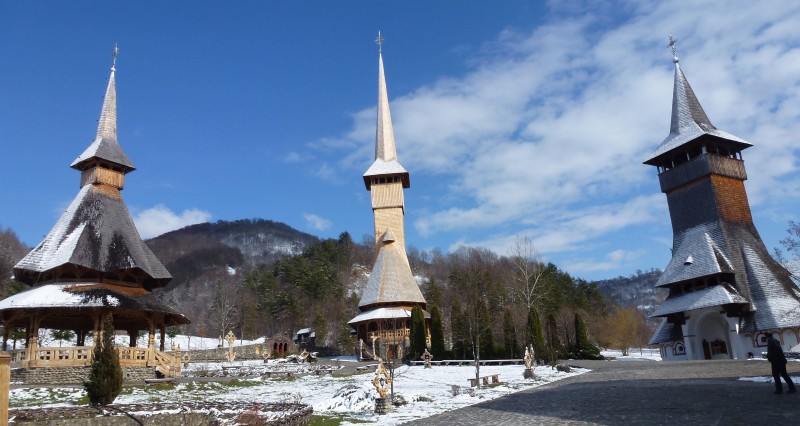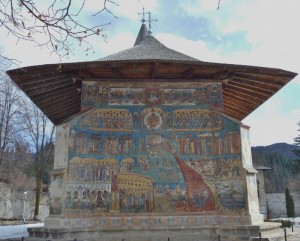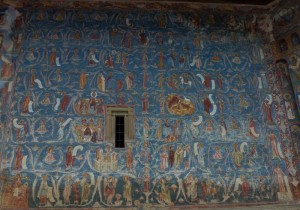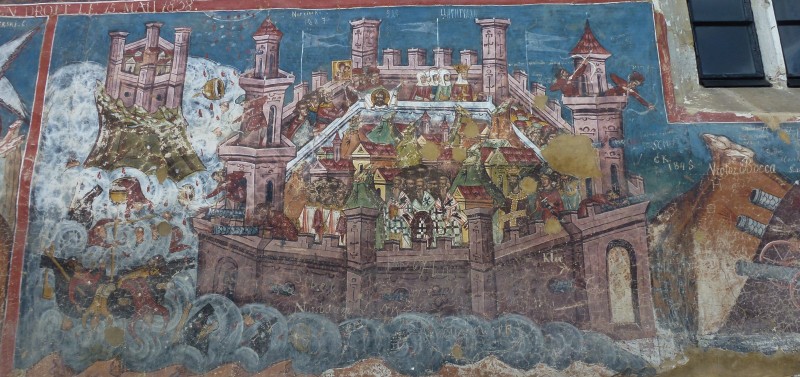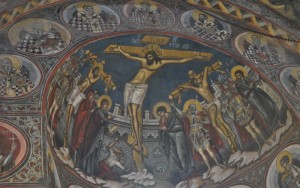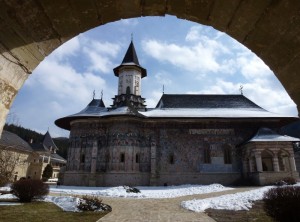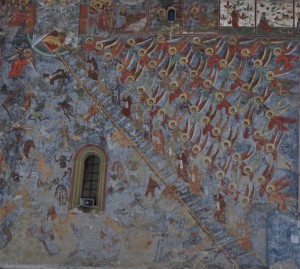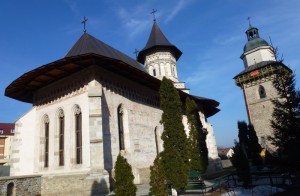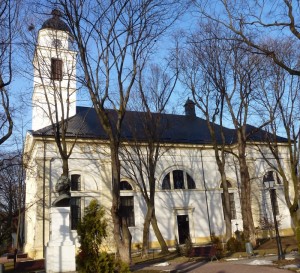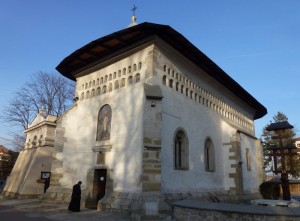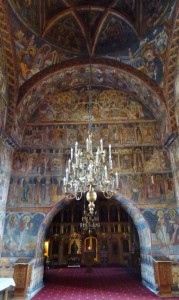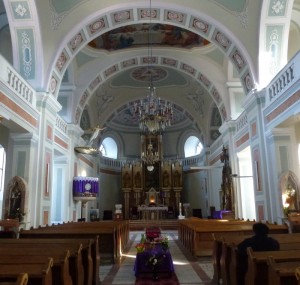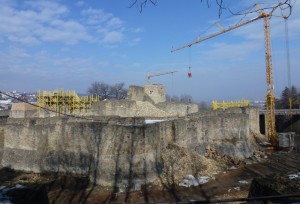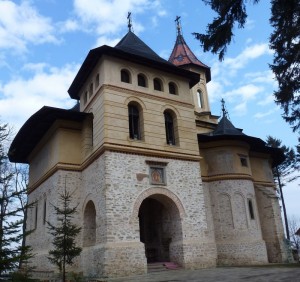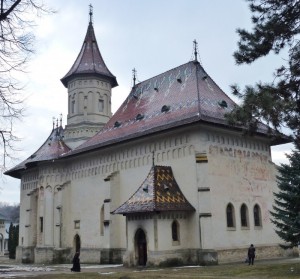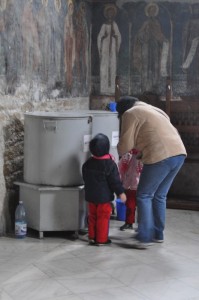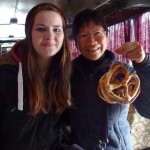Maramures & Moldavia March 15-19
March 15 Friday: Cluj, Transylvania – Baia Mare, Maramureş
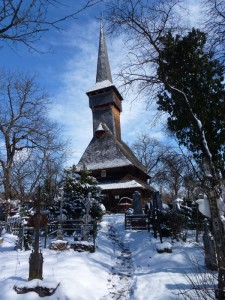 Maramureş, the northernmost county with an area of 6,300 square kilometres is mountainous with valleys, plateau and rivers. Eight wooden churches are on the WHS list as they are a particular vernacular expression of the cultural landscape of this mountainous area. They show a variety of designs and craftsmanship adopted in these narrow, high, timber constructions with their characteristic tall, slim clock towers at the western end of the building, either single- or double-roofed and covered by shingles.
Maramureş, the northernmost county with an area of 6,300 square kilometres is mountainous with valleys, plateau and rivers. Eight wooden churches are on the WHS list as they are a particular vernacular expression of the cultural landscape of this mountainous area. They show a variety of designs and craftsmanship adopted in these narrow, high, timber constructions with their characteristic tall, slim clock towers at the western end of the building, either single- or double-roofed and covered by shingles.
I took the 6am bus to Baia Mare. It started to snow and the bus drove slowly and arrived at the destination around 10am. I went to the ticket office hoping to get information. No one spoke English. Then a man whom I saw on the bus from Sibiu to Cluj came up and offered to take me to see wooden churches. I agreed to pay 350 lei for a whole day trip covering Deseşti, Sighet, Zăpânta, Budeşti and Şurdeşti.
The driver is 38 years old and drives an old BMW. He first stopped at a gas station and I paid 150lei for petrol with my credit card. He asked me to pay up the rest. I should have insisted to pay at the end of the trip. As he looked sincere and I met him in Sibiu, I was less vigilant and gave him the money. This was a grave mistake I made.
The road was covered in snow and ice. His car got stuck three times and he stopped other drivers to help pushing his car twice. I did not feel safe and saw no point in going on as we had to go uphill. He looked worried as he did not want to give me back my money. He used his broken English suggesting to resume the trip the next day. As I had to move on, I asked him to drive me in the direction of Suceava to visit a couple of wooden churches and dropped me in one of the towns where I could catch a bus to Suceava on March 17.
He dropped me at Pension Picturilor where I paid 80lei for a nice single room. He chatted with the owner and reconfirmed that he would be back the next day. He gave me the impression he knew the pension well and forgot to get his phone number thinking the owner would have his number. I was all wrong.
In the afternoon, I walked around the historic centre which is lovely with the 50-m high Stephen’s Tower (1442-46), many elegant 16th – 18th century buildings in Baroque style and three churches (an Orthodox Church, a Cathedral and an Evangelical Church). I went to the Art Gallery where the paintings by Romanian artists are beautifully arranged in an old elegant mansion of a rich man. I find two most beautiful traditional heating stove and sought the attendant’s permission to take a picture.
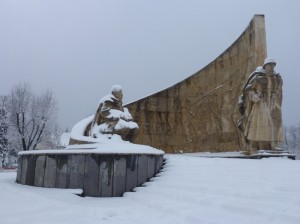 |
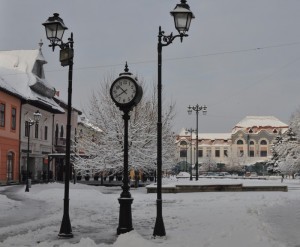 |
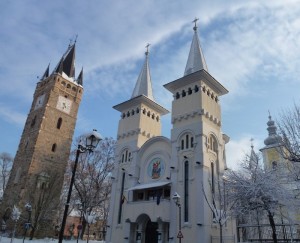 |
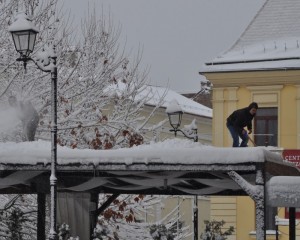 |
There are several museums but I was not in a mood to wander around. It was freezing and I was hungry. I went into a modern looking restaurant “Lumiere” at Piaţa Libertăţii. I had spaghetti as starter and pork as the main course. The food was delicious and beautifully presented for cost 40lei. Very cheap!
The view from my window on the park across the road was lovely with trees covered in snow. I spent the rest of the day writing and reading in my room.
March 16 Saturday: Wooden Churches in Maramureş – Suceava
I was thrilled to find a snow white world against a blue sky. I rushed to the old town to take some photos and was back at the pension waiting for the driver at 8am. He did not appear. By 9am, I got anxious and asked the owner of the pension to contact him. Through sign language, the owner told me that he did not know the driver and did not have his phone number. His wife speaks French and I told her about my story. Their reply is simple “He is a gypsy and has cheated you. He won’t come back”. I was angry with myself for misplacing my trust in such a man who ruined my stay in Maramureş.
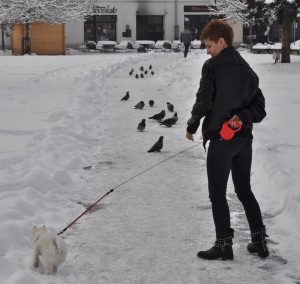 |
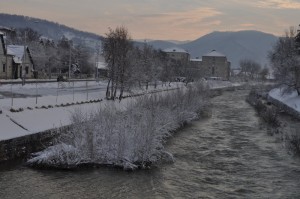 |
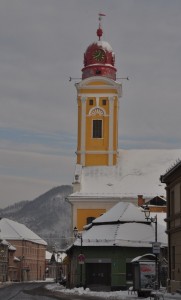 |
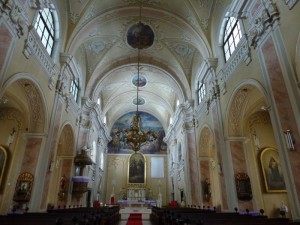 |
But life has to go on. I told myself not to be upset and to move on. I asked the owner to find a reliable taxi driver. His friend Nicolas who does not speak English turned up an hour later and we agreed on the route and the price of 300lei. Nicolas is friendly and gave me some information using postcards and maps. I visited five attractions from 11am to 4pm covering about 200km.
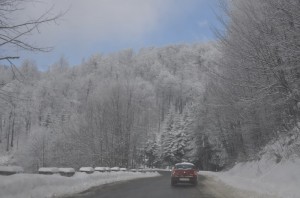 |
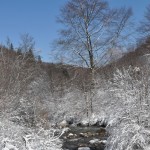 |
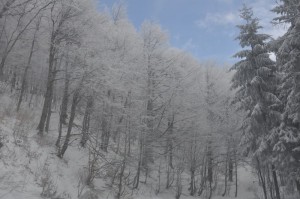 |
Deseşti (a WHS) – The atmospheric wooden church built in 1770 with a double roof and located on a hillock in the middle of a cemetery was closed.
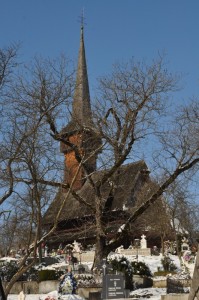 |
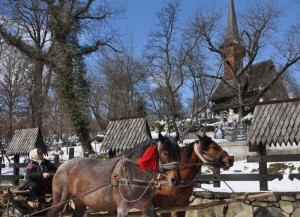 |
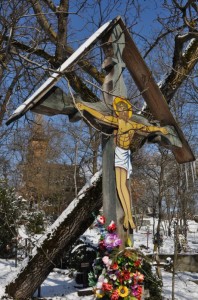 |
Merry Cemetery, Zăpânta – My spirit was lifted when I saw a forest of colourfully painted wooden grave markers carved with portraits of the deceased or scenes from their life inscribed with witty remarks.
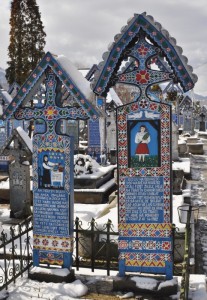 |
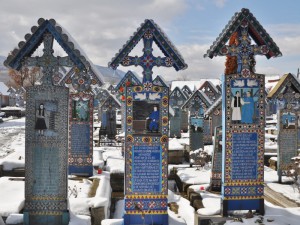 |
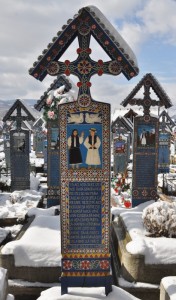 |
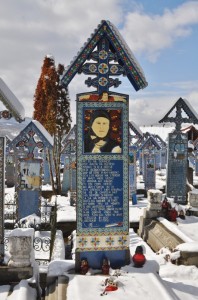 |
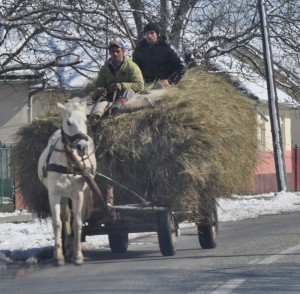 |
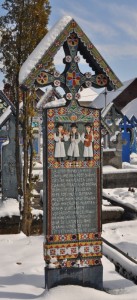 |
Bârsana (a WHS) – The driver did not know about the church built in 1711 and took me to a Monastery complex built since 1993 with impressive wooden buildings in traditional styles and a 57-m high steeple. I spotted the old wooden church atop a hillock on our way out of the village.
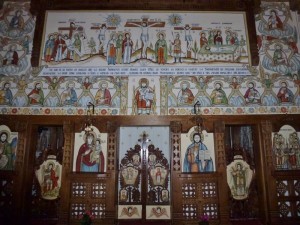 |
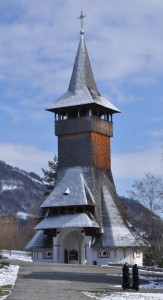 |
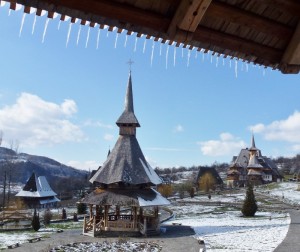 |
Budeşti (a WHS) – The church with fine frescos built in 1586 on a slope was locked.
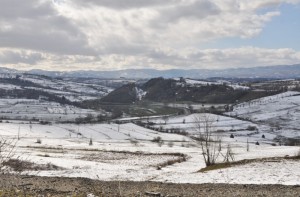 |
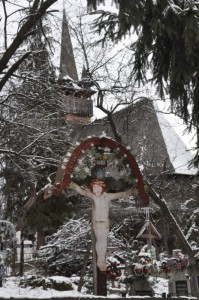 |
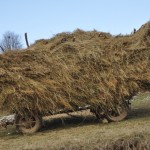 |
Şurdeşti (a WHS) – The church (1721) with a 54-m high tower (3 times the length of the church itself) by a stream and clad in thousands of oak shingles is most serene and picturesque. As expected it was locked.
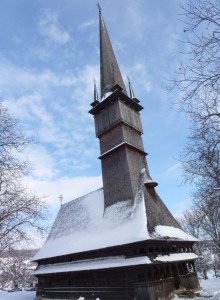 |
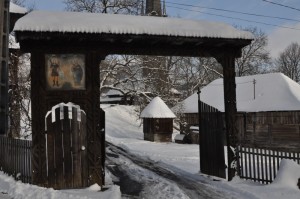 |
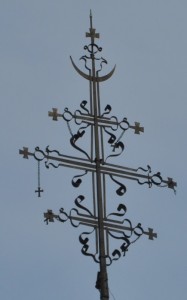 |
There is no direct bus from Baia Mare to Suceava. My experience tells me that buses to Suceava would pass through Dej. I therefore took a 5:45pm bus to Dej and asked the driver whether there would be a connecting bus leaving for Suceava that evening. He kindly called his company and found a bus would be leaving just before the bus arrived in Dej. He talked with the driver who would wait for me. I got off at a junction outside Dej and hopped on another bus at 7:15pm. Perfect!
I would be arriving in Suceava around 12:30am. At 10pm, I called Irene Hostel located right next to the bus terminal to confirm the time of arrival. Alex, a young man of 22 years old who works for the hostel, welcomed me when I arrived. I was the only guest and my room with a traditional tiled stove was cozy and warm. I went to bed at 2am! What a long, eventful and exhausting day!
March 17 Sunday: Painted Churches in Moldavia
Moldavia became an independent in the 14th century and had its golden era during the reign of Stephen the Great (1457-1504) and his illegitimate son, Peter Rareş (1527-38, 1541-46). Eight churches built from the late 15th century to the late 16th century (mainly during the reign of Petru Rareş) with external walls all covered in fresco paintings are on the WHS List. They are authentic and masterpieces inspired by Byzantine art. The paintings form a systematic covering on all the facades and represent complete cycles of religious themes (including the Tree of Jesse, the Last Judgment and the Church Hierarchy). The composition is exceptional, the characters are elegant and the colours blend perfectly with the surrounding countryside.
I booked a tour to see four painted churches which are all lying within 60km radius of Suceava, the residence of the Moldavian princes. I had to pay 300lei for the car and Alex was the driver.
Humor Monastery (founded by Petru Rareş in 1530). The Church of the Assumption of the Virgin was closed when we arrived before 11am. A nun told us it would be opened after the mass. (We returned at noon but another nun told us to go away. It is a pity that the opening hours are not properly made known to visitors).
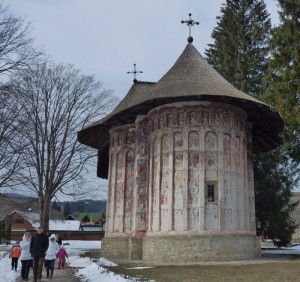 |
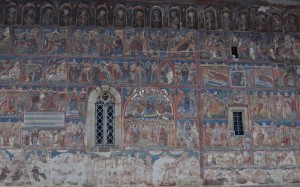 |
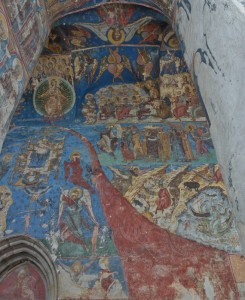 |
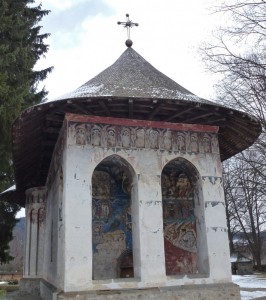 |
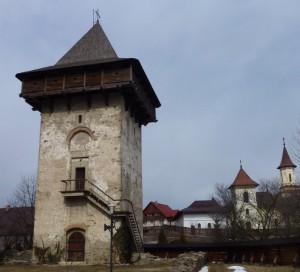 |
Voroneţ Monastery (founded by Stephen the Great in 1488) Voroneţ is dubbed the “Oriental Sistine Chapel” and is famous for the “Voroneţ blue”. The frescoes (both inside and outside of the church) are awesome. The Last Judgment on the western wall full of interesting details about the place, customs and the people is amazing and breath-taking.
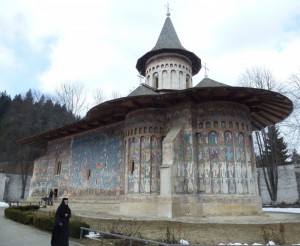 |
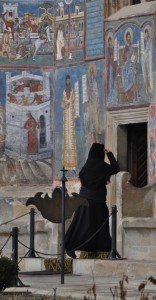 |
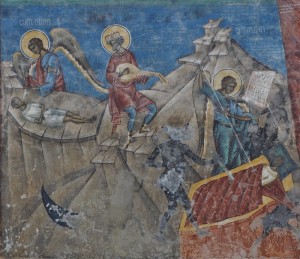 |
Moldovita Monastery (founded in 1532 by Petru Rareş) The Church of Annunciation of the Monastery was rebuilt by Alexander the Good and the frescoes including a remarkable Siege of Constantinople were done by Toma of Suceava in 1537.
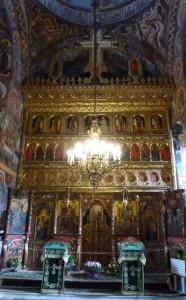 |
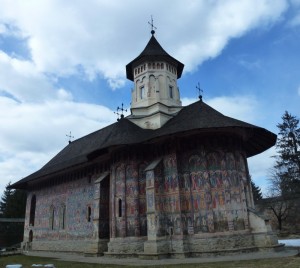 |
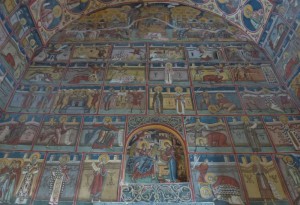 |
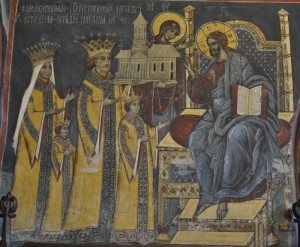 |
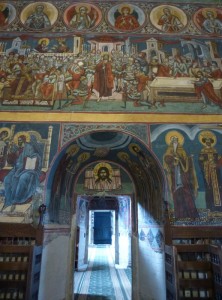 |
The nun on duty inside the church kindly allowed me to take a couple of photos without flash. Though she could not speak English, she and a dentist who was helping the nuns tried to tell me about the calendar and meaning of the frescoes. (I saw the dentist at a lookout point later. He invited me to sample the wine from the monastery which is surprisingly good)
Sucevita Monastery Church (built in 1584). The frescoes were painted in 1596 and the most famous one is Ladder of Virtue on the northern wall. The Last Judgment is inside the unusual fully enclosed porch. The fortress-like monastery with walls, towers and belfry has a most impressive museum. I am astonished to see the oldest piece of tapestries dating from the 14th century in perfect condition. The hilltop behind the monastery is the perfect spot to see the magnificent complex. As it was covered in snow, I did not attempt to take a hike to the top.
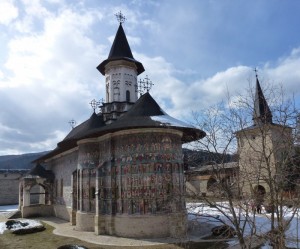 |
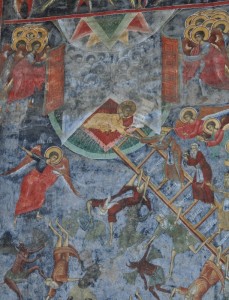 |
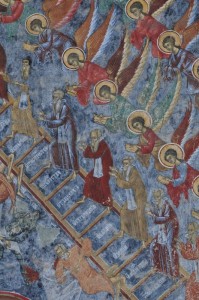 |
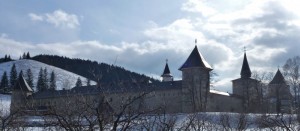 |
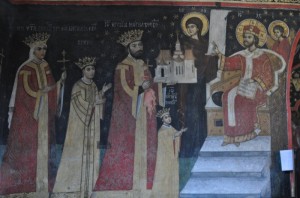 |
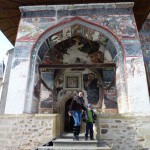 |
On the way back to Suceava, I asked Alex to take me to see the Abore Church, another painted church on the WHS List. This church was built in 1503 by Luca Arbore, Lord of the village and Marshall of Moldavia. The murals dating from 1541 are similar to those found in other painted churches but in poor condition. The door was locked and I could not see the interior.
I had a most enjoying excursion learning more about the Moldavian style of paintings, the common and recurrent themes of the mural paintings as well the 365 scenes of the Calendar of Saints which appear in the interior of all the churches. I had chicken and vegetables from a supermarket and had a delicious dinner.
March 18 Monday: Trip to Neamţ County
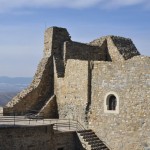 Anna a 23-year-old girl was my guide today as Alex had classes to attend. Anna is doing a Master’s Degree in German language and a law degree and is very smart. I had to pay 350lei to see four main attractions in the Neamţ County. The driving distance is about 250km.
Anna a 23-year-old girl was my guide today as Alex had classes to attend. Anna is doing a Master’s Degree in German language and a law degree and is very smart. I had to pay 350lei to see four main attractions in the Neamţ County. The driving distance is about 250km.
Neamţ citadel was founded by Petru I Muşat in 1359 and strengthened by Stephen the Great to withstand the attack by the Turks in late 15th century. It is entered by a long curving wooden bridge raised on pillars high above a dry moat. Inside the citadel is a small museum about citadels built in Moldavia around the 14th century to defend the land mainly against the Turks. There is no English translation but I figured out the contents from the drawings.
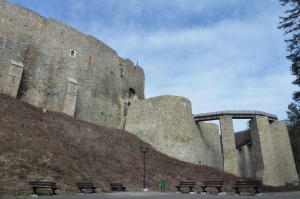 |
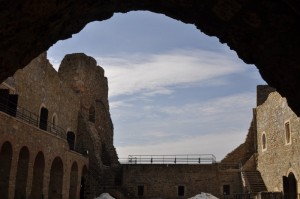 |
Agapia Convent surrounded on the four sides by whitewashed 2-storey buildings is the largest convent with some 500 nuns. The Renaissance paintings inside the church (1644-47) were done by Nicolae Grigorescu in the mid-19th century.
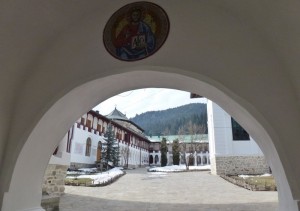 |
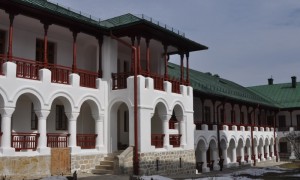 |
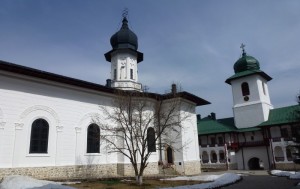 |
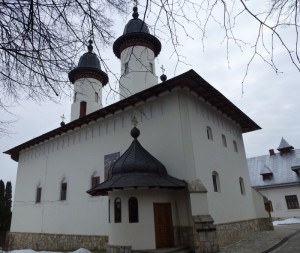 |
Văratec Convent was founded in the 18th century. Like Agapia Convent, it is enclosed by whitewashed walls with a church built in 1808. Cottages for senior nuns painted in pale blue scatter around the garden. I find this convent most atmospheric: the iconostasis in the church has icons all in gold and silver, the beautiful paintings (according to Anna) done by Nicolae Grigorescu look serene with age and the whole complex is tranquil and picturesque.
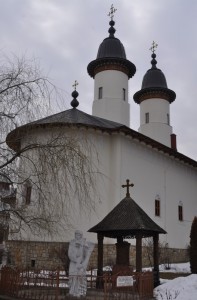 |
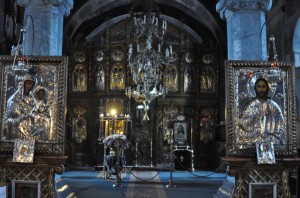 |
Neamţ Monastery built in the late 14th century by Petru I Muşat and rebuilt by Alexander the Good with fortifications against the Turks is impressive. The use of red bricks and ceramic tiles gives this fortress-like monastery a different feel.
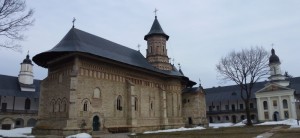 |
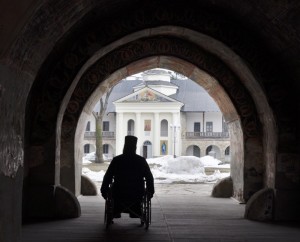 |
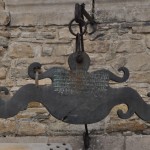 |
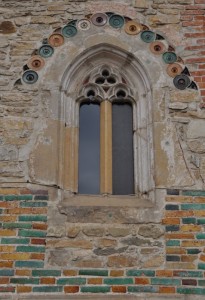 |
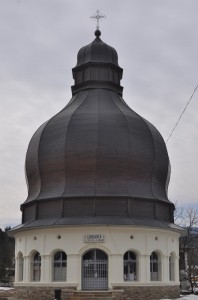 |
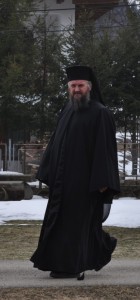 |
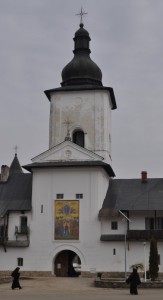 |
Anna dropped me back in the hostel before 4pm. The weather was nice and I walked around the city and visited the Church of St Dumitru and the Roman Catholic Church. I saw a man rang the bells at Dom Polski and many people hurried to the church. It was 5pm when I entered Dom Polski, an Orthodox church. The service went on for almost two hours and I watched with amazement when most of the Orthodox Christians knelt throughout the service. I later found out that this service marked the beginning of Lent.
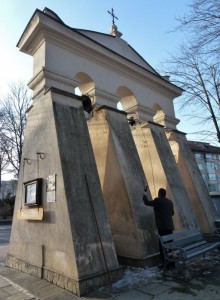 |
March 19 Tuesday: Suceava, Romania – Chernivtsi, Ukraine
My bus to Ukraine would be leaving at 1pm. It’s cloudy but I still went off to see the Suceava fortress (similar to the Neamţ citadel). It started to rain when I arrived at the painted Church of St George in the Monastery of St John of Suceava which is also on the WHS List. The exterior paintings dating 1534 and depicting the traditional themes only survive on the west and south facades. There was a service going on in the Church which was filled with pious Christians. I stayed for half an hour watching the ceremony and listening to the singing and chanting.
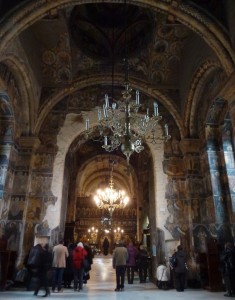 |
I picked up my suitcase and said good-bye to Alex. I paid 30lei for the journey to Chernivtsi. The bus set off at 1pm and arrived at the border an hour later. The procedure is simple: the driver collected our passports and a Romanian official came up to check and give me back my passport.
I was on the Ukraine soil before 2:30pm.


